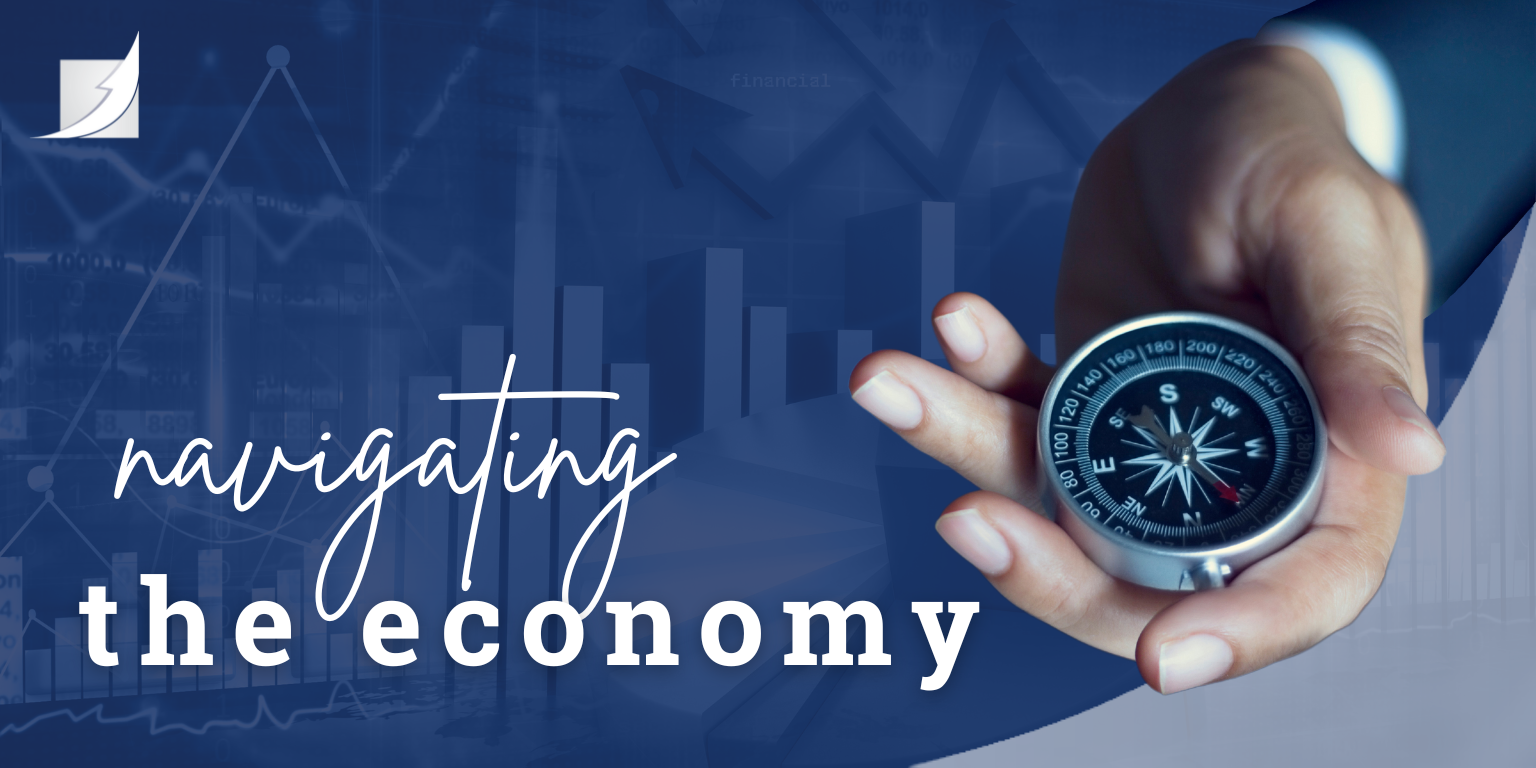NAVIGATING THE ECONOMY
Smooth Sailing or Rough Waters – Charting What’s Ahead
April brings a lot of things. Baseball is back, and there are longer, warmer spring days and festive holidays to enjoy. But April also brings an inescapable fact of life – tax time. For many – individuals, businesses and nonprofits – it means a special focus on finances and where money is coming from, and how it’s being spent. And it means planning, which can feel especially challenging right now.
The job market is strong, but sweeping layoffs are in the news almost daily.
Interest rates keep going up, but consumers are still spending.
Inflation is stubbornly high, but the stock market is resilient.
Bank failures are in the headlines, adding to uncertainty.
So, especially when it comes to nonprofits and all they have weathered in the three-plus years since the pandemic changed the world, are we looking at a rebound…or a recession? How are organizations managing and planning, and what should they be doing to shore up finances and strengthen fundraising, in the face of conflicting signals?
The New Jersey Center for Nonprofits released its annual Trends and Outlook report last month, with organizations in the state weighing in on how they fared last year, and what they expect in 2023. It’s important to note there are more than 40,000 501(c)(3) organizations in New Jersey, with their employees making up nearly ten percent of the state’s private sector workforce. These nonprofits had annual expenditures (pre-COVID) of more than $50 billion.
The bottom line of this year’s survey is that “nonprofits overall have clearly experienced some key improvements since the worst of the pandemic in 2020.” However, significant challenges remain including: “Demands for services and rising expenses are still outpacing funding” and “Nonprofits are struggling with significant workforce shortages that threaten their ability to meet community needs.”
Demands for services and rising expenses are still outpacing funding. Nonprofits are struggling with significant workforce shortages that threaten their ability to meet community needs.
As the Center sums it up, “Nonprofits have experienced improved circumstances compared to the worst of the pandemic, but economic concerns, resource scarcity, the ending of government relief programs and key federal charitable giving incentives, and ongoing racial inequities all affect their ability to address continually escalating community needs.”
Economic concerns are front and center for the state’s nonprofits. When asked to identify the issues presenting the greatest challenges to the viability of their own organizations, financial uncertainty was the most frequently mentioned at 44%. But along with concerns is optimism, with 62% predicting their situation would be better a year from now.
Financial uncertainty was the most frequently mentioned challenge among nonprofits.
So whether rebound or recession or holding the line, one thing is true…no one has a crystal ball! But what we here at The Munshine Group do have is a team with decades of cumulative experience helping nonprofits weather uncertainty and storms, and an eagerness to listen to, and learn from, other experts.
In mid-March, Deloitte said “a potential ‘soft landing’ for the US economy might just be in sight” and its “economic forecast remains optimistic” despite some significant risks.
At the same time, The Conference Board forecast that “economic weakness will intensify and spread more widely throughout the US economy over the coming months, leading to a recession starting in mid-2023.”
So, with even leading financial institutions at odds, what’s a nonprofit to do right now in taking stock of the future? Looking to the past is a good place to start.
The Great Recession of 2008-09 offers insights, and important reminders. GivingUSA Foundation research showed that during the worst economic downturn since the Great Depression, total giving to charity was down 7.0% in 2008, and another 6.2% in 2009. Certainly, a total drop of more than 13% was significant, with a serious impact on many organizations. But, during that deeply distressing economic period, giving did not drop by a quarter, a half or more and, of course, giving never drops to zero.
More recently, as we all dealt with the impact of COVID-19, the Women’s Philanthropy Institute at Indiana University’s Lilly Family School of Philanthropy found between May 2020 and May 2021, the first year of the pandemic, “Giving by all household types increased.” The report “tells an encouraging story about how U.S. households respond by giving during a prolonged crisis. Rather than experiencing generosity fatigue, people continued to support organizations, especially those focused on basic needs and health.”
Experience shows it’s crucial that nonprofits NOT create the self-fulfilling prophecy of a drop in their own donations. During rocky economic times, don’t assume donors don’t want to hear from you, don’t assume they don’t want to talk, and don’t assume they don’t want to give. Logic, data and our experience show it’s best to allow donors to decide for themselves whether, when and how much to give. Presented with the opportunity to be generous, especially when others are struggling, many rise to the occasion. And when economic factors make it a tough time for some to give, for others, including the affluent and major donors, it might be an ideal time.
It’s crucial that nonprofits don’t create a self-fulfilling prophecy. Don’t assume donors don’t want to hear from you, don’t want to talk to you and don’t want to support your organization.
A study from the University of Michigan found that after the Great Recession, the overall average percentage of income given by all households stayed fairly stable compared to what they gave before, adding “Giving can become a habit. Even if the economy is hit hard, some people will not change their giving behaviors dramatically,” adding “it’s important to note that you can keep fundraising, even during a Recession. You don’t have to be worried that all of your donors will completely stop giving.”
We not only echo that, we say it’s important to note that you must keep fundraising. Nonprofits can’t assume the timing of economic contractions (again, that crystal ball no one has!) and cutting budgets, laying off staff and backpedaling on fundraising and communications all run the risk of causing that feared cutback.
We know that whatever the economic conditions, nonprofits need to stay true to their missions, know their relevance and impact, and remain connected with donors and prospects. The generosity is there. How generous? GivingUSA’s latest full-year report, for 2021, shows donations to U.S. charities from individuals, bequests, foundations and corporations totaled $484.85 billion, up four percent from the previous year. Although giving grew in total dollars, it remained flat after adjusting for inflation. “Even so,” GivingUSA says, “2021 was the second-highest year for giving on record in inflation-adjusted terms.”
We know that whatever the economic conditions, nonprofits need to stay true to their missions, know their relevance and impact, and remain connected with donors and prospects. The generosity is there.
That generosity is deeply inspiring, and decades of research and experience show that while circumstances from a recession to a pandemic can sometimes cause that flame of giving to flicker, it will never be extinguished. Fundraisers should be proud – always – of their role as keepers of that flame.


